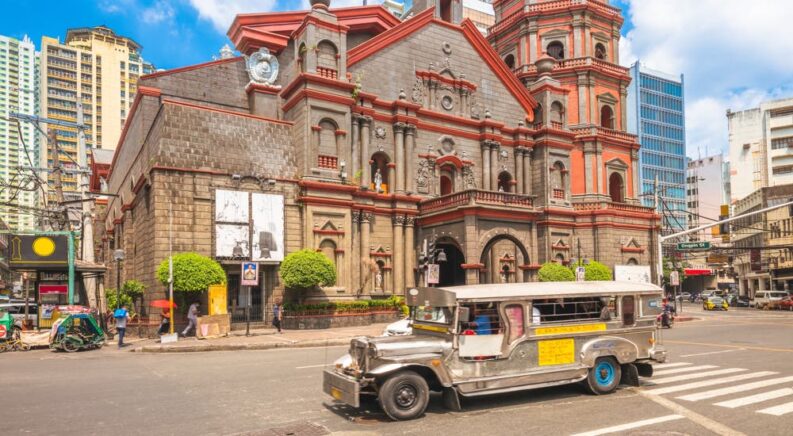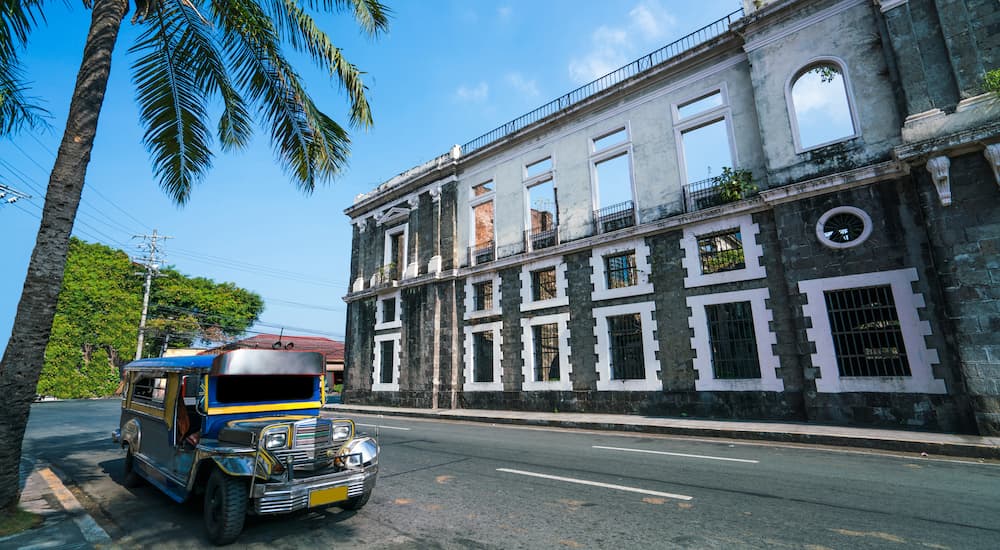Public transportation serves an important role in society, allowing people to commute to work, visit family, and get where they need to go without investing in their own vehicles. While your local city bus might be clean, reliable, and an efficient form of transportation, there’s one thing it’s not: a psychedelic sensory overload. The same can’t be said for one of the Philippines’ primary forms of public transit, the jeepney.
Originally based on military surplus Jeeps, these elongated, kaleidoscopic coaches look suspiciously like something a group of hippies might have rolled up to Woodstock in during the late 1960s. Jeepneys are a deeply ingrained part of Filipino culture. Over nine million commuters in Metro Manila ride a jeepney each day with 600,000 drivers operating throughout the island nation.
Some automotive subcultures are based on speed or performance, while others are more focused on activities like off-roading, aesthetics, and even stereo systems. I’ll explore a variety of these cultures as part of this new series, and jeepneys couldn’t provide a better starting point. Jeepneys are a unique mix of form and function; while they play an important role in daily life for many Filipinos, they double as a canvas on which operators can etch their artistic dreams.
From their origins and modern incarnations to challenges facing the jeepney culture and their uncertain future, read on as I explore how a post-war necessity became a cornerstone of Filipino culture.
From Jeep to Jeepney
While they might look fun and colorful, jeepneys were actually born out of necessity at a dark time in Filipino history. World War II was tough on the country—particularly urban centers like Manila, where widespread bombing had destroyed much of the city’s infrastructure. Public transportation was similarly depleted, leaving citizens without a cheap and effective way of traveling around town.
US Armed Forces largely left the country following the end of WWII, leaving behind a surplus of military supplies and equipment that included a whole lot of Jeeps. These surplus Jeeps were purchased by enterprising Filipinos and, after some hefty alterations, converted into reliable people-movers. Dubbed jeepneys—a combination of Jeep and “jitney,” an older term for an affordable public transit vehicle—these new vehicles played an important role in the Philippines’ post-war revitalization.
A more colorful and likely apocryphal story credits the name to a portmanteau of “Jeep” and “knee” due to the fact that the vehicle’s close quarters meant riders would often bump knees in the cramped seats. It’s not that hard to believe when you run the numbers: while the typical military-issue Jeep could usually fit no more than four or five passengers, these new automotive creations could accommodate as many as fifteen to twenty-five.
The Jeeps were often lengthened, clad in sheet metal, adorned with a roof, and saw their traditional seats replaced with long benches to maximize rider capacity. While these features are all jeepney hallmarks, it’s their kitschy design that really sets them apart. Jeepneys are painted in bright, garish colors and designs that would help to catch the attention of potential customers while simultaneously giving Filipinos a chance to express their artistic side. It’s the vehicle’s psychedelic styling that’s really the hallmark of jeepney culture.
While the 1970s culture of garishly airbrushed vans might have come and gone in America, it’s alive and well in the Filipino jeepney. From Jesus, Mary, and Michael Jordan to the iconic Louis Vuitton print, Street Fighter characters, Native American warriors, musicians, movie stars, and Filipino boxing icons like Manny Pacquiao, every jeepney is a canvas on which an operator can pay homage to their favorite celebrities, brands, and pop culture icons. These fantastical designs aren’t limited to the paint job; jeepneys are also typically adorned with curtains, tassels, ornaments, and other flourishes that turn each vehicle into a one-of-a-kind sculpture on wheels.
A Different Sort of Bus
Jeepneys aren’t quite as lawless as they might first appear to a Western traveler. In order to operate a jeepney, drivers have to obtain a special license and adhere to strict regulations, such as operating set routes and charging reasonable fares. This might not seem that different from the average public transportation one would find in the West, but the main difference comes down to how passengers board and deboard the colorful conveyance.
While jeepneys operate on a set route, they don’t have set stops; instead, passengers typically hop aboard the vehicle via the back door, which is often left open throughout the journey. While drivers will sometimes slow down when approaching a popular stopping point, more often than not, they’ll simply slow down to allow passengers to jump on or off.
But jeepneys aren’t just an affordable way to get around town; they’re a cultural icon that serves an important role in bringing the community together. While Westerners are unlikely to wax on about their favorite city bus, Filipinos wholeheartedly embrace the odd-ball public transports, which are said to embody the country’s spirit of resilience and inventiveness. A jeepney’s close quarters make it hard not to bond with your fellow rider, creating a sort of rolling community meeting place that’s been known to foster friendships, business deals, and even romance.
No Two Jeepneys Are Alike
While the term is generally used as a catch-all, the exact size, shape, and design of a jeepney differs depending on use and region. The most important distinction is between commercial jeepneys—commonly referred to as public utility vehicles (PUV) or passenger-type jeepneys—and the non-commercial versions dubbed owner-type or simply owner jeepneys. These owner-types are used for personal transport and often lack the extended length and extra seating of their larger commercial cousins. They also tend to be a little different in styling, employing a more hot-rod- or military-inspired look and often riding low to the ground.
A jeepney might also look a lot different depending on what part of the Philippines you’re in. The province of Cebu, for example, is known for a unique type of jeepney that’s usually based on older Japanese cargo trucks like a Suzuki Carry or Isuzu Elf. Known as surplus trucks, these regional jeepneys are easily recognizable thanks to their height, flat-nose design, powerful stereo systems, and race-inspired styling. The Karatig jeepney—common to the province of Bulacan—is distinguished by its smaller size and limited capacity; it can usually only hold around ten to twelve passengers and is often used for shorter routes within a city.
Many jeepney models employ a classic, Jeep-inspired look, but others are decidedly more contemporary. The uso-uso—a popular variant common in Davao City—isn’t likely to be mistaken for an old-school jeepney anytime soon. The uso-uso are built low to the ground and distinguished by their modern grilles and bodywork that make them resemble a sort of stretched-out version of a Scion xB. Uso-uso also tend to employ a more restrained paint job than other types of jeepneys, with owners typically settling for one primary color with a few decals and branding thrown on for good measure, though eye-catching chrome wheels often provide a little flair.
If you can’t spot an uso-uso at a distance, you’ll certainly be able to hear it coming. Like many owner jeepneys, uso-uso are often fitted with a potent sound system that sees these vehicles labeled as mobile discos. In some cases these sound systems even allow passengers to participate in one of the country’s favorite pastimes with integrated karaoke systems that turn every ride into a chance to belt out your favorite tunes.
While early jeepneys were based on military surplus Jeeps, a number of Philippines-based automakers soon emerged to fill the need for newer models. The biggest and most famous was Sarao Motors, which began producing readymade jeepneys in 1953. Sarao has displayed its jeepneys around the world, including exhibitions in New York and London, and it bore the jeepney of choice for Pope John Paul II on his 1981 tour of the country.
Jeepneys have certainly changed with the times, introducing new features and designs to stay relevant in a changing market. First came the third-gen jeepney models based on popular mass-produced trucks and SUVs like the Toyota Tamaraw, Mitsubishi Cimmaron, and Ford Fiera. These have steadily been replaced by new models built on pickup and van models like the Toyota Hilux and Hyundai H100 and include modern safety, comfort, and convenience features like air conditioning, CCTV, fare collection system, speed governors, GPS, and Wi-Fi.
The design of these new jeepneys is often based on the specific route on which they’ll operate; an inter-city jeepney, for example, might employ the perimeter seating approach for fast entry and exit, while longer-distance models might feature a more traditional design with individual rows of seating.
The Road Ahead
Jeepneys have served an important role in Filipino culture for over eighty years, but they could soon be on their way out—at least in their traditional form. From environmental regulations and safety concerns to increased competition and a shrinking number of manufacturers, there is no shortage of factors that could hasten the jeepney’s demise.
The Philippines’ deregulation of fuel prices has seen the price of diesel skyrocket in recent years, and while many modern jeepneys have switched out diesel for gas and liquefied propane, their environmental impact is still a bit suspect. According to one study published in 2017, a 16-passenger jeepney uses about as much gas as a 54-passenger bus; this damning statistic makes the less-efficient jeepneys hard to justify in an age where major cities like Manila and Cebu have steadily expanded their bus-based public transit systems.
The Filipino government has responded by setting its sights on the aging fleet of jeepneys that service the country, imposing a 15-year age limit that forces drivers to upgrade to a model with a Euro-4-compliant engine or switch to a new electrically powered jeepney as part of its Public Utility Vehicle Modernization Program (PUVMP). These jeepneys are more like modern buses than the conventional designs that have served the country for so long; they even feature a new, mandatory, tap-based payment system—but it’s not just the vehicles themselves that are changing, as the PUVMP program also requires jeepney drivers to join a co-op or found a corporation to stay in business.
So, what does the future hold for the Philippines’ jeepney culture? Like most other auto markets around the world, electrification is playing an increasingly important role. Electric jeepneys have slowly come into the mainstream over the last few years as the country tries to get a hold of its greenhouse gas emissions. This new breed of jeepney is made as light as possible by removing the layers of metal sheets that once adorned many models, and they employ a new unibody approach that offers some real benefits in terms of efficacy and comfort when compared to the body-on-frame designs of old.
Still, these new EVs face one big hurdle: electricity is still relatively expensive in this island nation, making EV jeepneys an expensive proposition. These high prices have forced many smaller owner-operators out of the market, but EVs nevertheless represent one path forward in an industry where similarly high diesel prices have long been a concern.
Filipino Jeepneys: An Innovative Car Culture
From rickshaws and tuk-tuks to the taxi cabs of New York and the gondolas of Venice, unique regional vehicles like the jeepney are more than just a way to get around; they’re ingrained in the very fabric of the culture. The jeepney started out as a pragmatic solution to a post-war transportation issue, but these vehicles have turned into something else entirely in the ensuing decades. Designed to reflect the tastes and aesthetics of their owners, jeepneys are a colorful form of self-expression that serve as a sort of gas-powered reflection of the Filipino spirit.
Like all vehicles, jeepneys are bound to change over time, but there’s one feature that’s a complete non-starter when it comes to modernizing the Philippines’ jeepney fleet: in 2023, government regulators assured the public that, no matter what might be under the hood or how one pays for a ride, they’ll make every effort to ensure jeepneys are able to retain their iconic, eye-catching looks.





